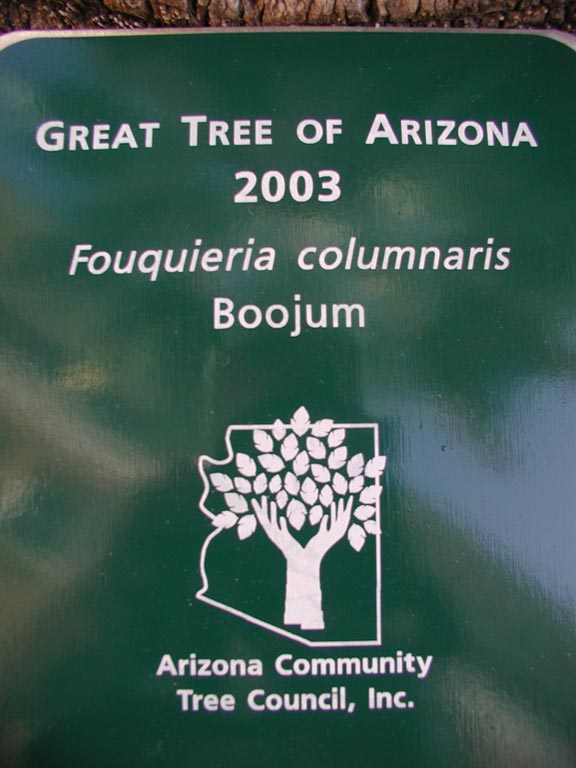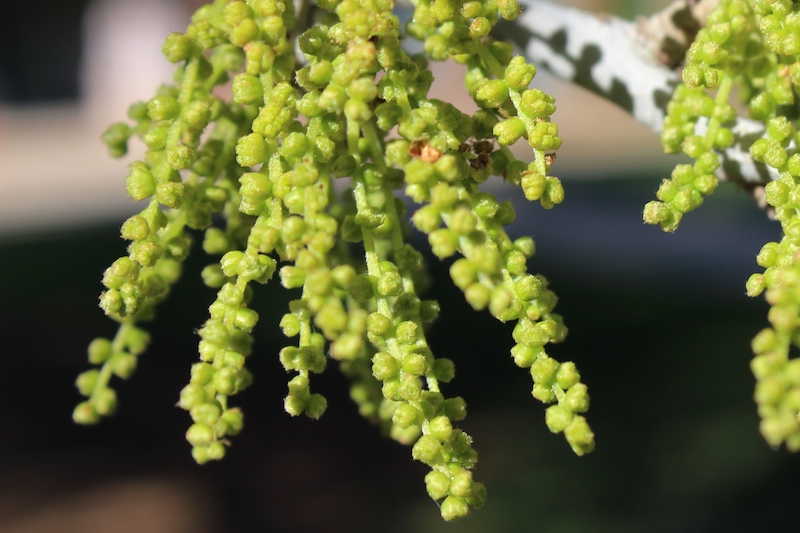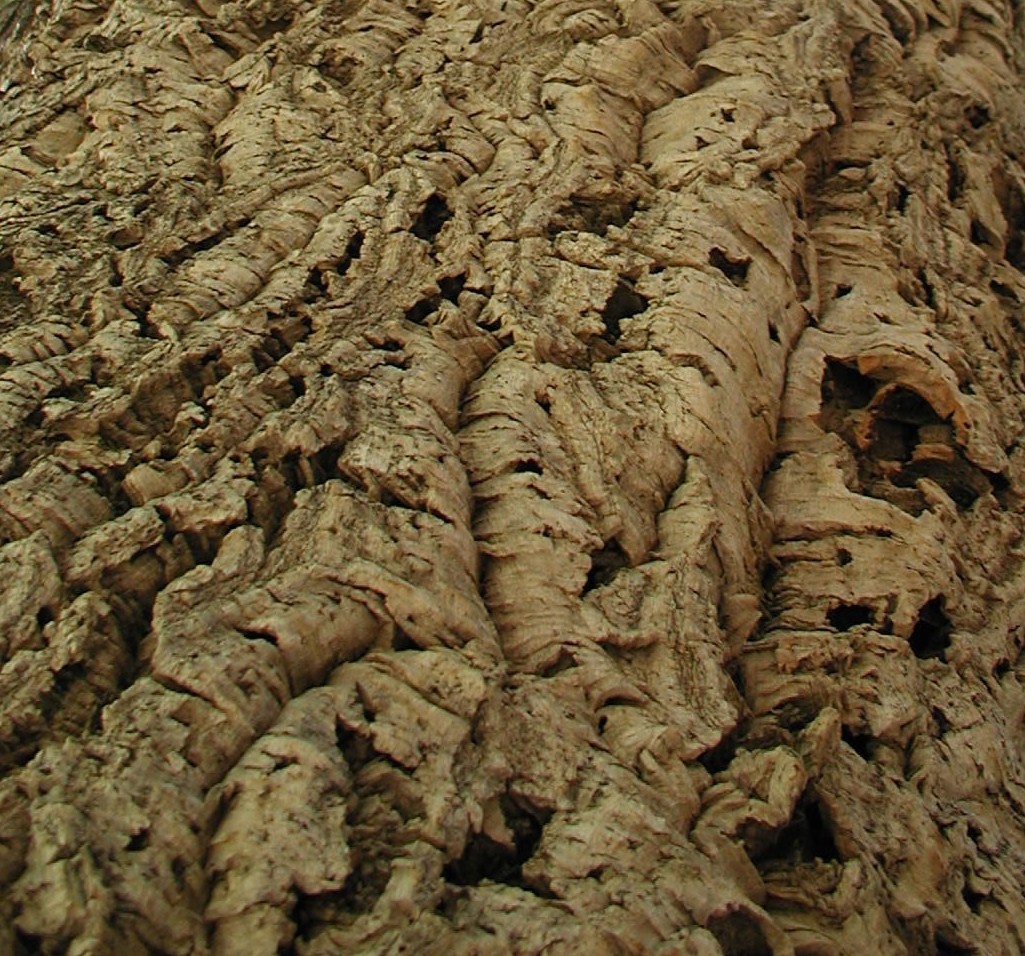 Arizona Great Trees The University of Arizona's trees are among the oldest in the state, or are, in other ways, unique. Since 2001, the Campus Arboretum has been successful in nominating and receiving recognition for the following trees on our campus as Great Trees of Arizona by the Arizona Department of State Lands. All of these trees are also UA Heritage Trees. In 2002, 2003 and 2004, a number of trees growing in Campus Arboretum collection were nominated and awarded status as Great Trees of Arizona. A brief summary of the characteristics for each award winner is included below. If you wish to visit these trees in person, use the interactive campus arboretum tree map to locate them by their accession ID # provided below. The map can be accessed at: https://apps.cals.arizona.edu/arboretum/map/
Arizona Great Trees The University of Arizona's trees are among the oldest in the state, or are, in other ways, unique. Since 2001, the Campus Arboretum has been successful in nominating and receiving recognition for the following trees on our campus as Great Trees of Arizona by the Arizona Department of State Lands. All of these trees are also UA Heritage Trees. In 2002, 2003 and 2004, a number of trees growing in Campus Arboretum collection were nominated and awarded status as Great Trees of Arizona. A brief summary of the characteristics for each award winner is included below. If you wish to visit these trees in person, use the interactive campus arboretum tree map to locate them by their accession ID # provided below. The map can be accessed at: https://apps.cals.arizona.edu/arboretum/map/
Adansonia za
Accession # 4386 This large African tree graces the southwest corner of the Administration Building. It belongs in the botanical family: Malvaceae. It is the only flowering individual tree of this species know to have flowered in the United States, according to a botanist at the Missouri Botanical Garden. Seeds brought from Madagascar were germinated in Virginia, and the seedling was subsequently held in a 15 gallon container at the Arizona Sonora Desert Museum. It was installed by Warren Jones on campus around 1980. This was nominated and awarded the status of Great Tree of Arizona, in 2002. [Link to Nomination Detail ]




Acacia xanthophloea
Accession # 3545 The fever tree is another example of an experiment to test adaptation of arid-adapted trees on campus for distribution in the nursery trade. By most accounts, a success! The first seedling was planted in the 1980s by Warren Jones, a faculty in Landscape Architecture. According to an article by Alan Dunstan in ARIDUS, Dec 1999, the seed was provided and seedlings were grown by Desierto Verde Nursery. The species is often used in African safari theme parks. While tender here, it dies back to the ground and resprouts with severe freezes (below 15F) every few decades. It is always a source of curiosity with its yellow powdery bark. It was the largest in Tucson when it died in 2011 as a result of severe freeze injury. Others of this species growing elsewhere on campus fared better and resprouted. [Link to Nomination Detail ]



Chorisia insignis
Accession # 1322 Formerly known by the synonym: Ceiba insignis, this species is a native of southern Brazil and Argentina. Although its original planting date was not recorded, Professor Emeritus Steve Fazio remembers this stately giant as being large and healthy when he arrived on campus in 1940. The University of Arizona Herbarium also houses a pressed flower specimen collected in 1957 from this exact tree. It is certainly the largest specimen of its kind and possibly the largest in Arizona. While it is winter deciduous, the large, creamy white lily-sized flowers remain through December or January until freezing temperatures cause them to drop. [Link to Nomination Detail ]



Crescentia alata
Accession # 1780 This tree belongs to the Botanical Family: Bignoniaceae. It is native to Mexico. At the time of its nomination, this was one of only three Campus Arboretum accessions for this taxa. It was also, by far, the largest. There were no others like it in Tucson. Located on the southeast side of the Main Library, this tree is unique for its bat pollinated flowers and fruits that develop on the trunk. It also has cross-shaped, evergreen leaves, and fruits used as bowls and drinking vessels. Seed collected on western coast of Mexico was germinated at University of Arizona Campus Agriculture Center. A small seedling from this work was planted by Warren Jones, in the 1970's, as an experiment to determine its performance in our climate. [Link to Nomination Detail ]



Quercus virginiana
Accession # 1457 This plant belongs to the Botanical Family: Fagaceae. This accession is striking for its dark green and broad spreading canopy. It was planted by former Professor of Plant Sciences Dr. Steve Fazio around 1950. Steve relayed how he planted several acorns in the Park Ave. Green Belt area, and this one remained. Undoubtedly it is the largest southern live oak in Tucson. Although this species is common in the nursery trade, such was not the case in 1950. This tree gives a dignified indication of the potential size of the species. [Link to Nomination Detail ]



Rhus lancea
Accession # 6712 Although the species is not unusual, and is now being thought of as undesirable because of its tendency to reseed, the value of this individual tree lies in its unique history. Former UA President Homer Shantz collected the seeds in South Africa in 1919. They were propagated in Chico CA, then installed on the UA campus in 1928. This makes this tree the first African Sumac planted in Tucson, for better or worse. Another one was installed at Boyce Thompson SW Arboretum about the same time. [Link to Nomination Detail ]

Quercus suber
Accession # 1319 This species is native to the Mediterranean. It is th largest of its species on campus, and quite possibly the largest in Tucson. It was planted on the south side of the Engineering Building prior to 1940. No one remembers who planted it. However, there is one voucher specimen at the UA Herbarium for this accession which dates to 1936. Steve Fazio, former Professor of Plant Sciences, remembers showing his young children the tree in the late 1940s. He referenced this tree when he introduced students to the trees on campus. More recently, alumni from the 1960s returned to campus and relayed the significance of this tree to them as they used it as part of a fraternity initiation ceremony. Today, students of botany, landscape architecture, ecology, and other sciences learn about the centuries-old technique of sustainably harvesting cork by peeling off the bark. [Link to Nomination Detail ]



Albizia sinaloensis
Accession # xxxx This species, commonly known as the Sinaloan silk tree, is native to southern Sonora and Sinaloa. Found in the tropical deciduous forest and arroyos toward the coasts throughout these states of Mexico. This tree was planted as a seedling by Warren Jones in the mid 1970s. In his book "Trees of Sonora, Mexico", Richard Felger states that the species can become as tall as 20 meters. It is not only unusual and rare in Tucson, it is undoubtedly the biggest in town. This tree is an excellent example of Warren was trying to achieve: a tree perfectly suited to the urban microclimate, which thrives in a site with little care, eventually becoming a noble example of a species. [Link to Nomination Detail ]



Pistacia chinensis
Accession # 3833. This species is native to China and Far East. Although the species is not rare in Arizona, this particular tree is a noble example of the species, illustrating the eventual size and stature possible for the species. Currently some landscape projects are planting these 20 feet on center or closer...much too close for their mature size! When Warren Jones arrived on campus in the late 1960s, the tree was already in place. The University of Arizona Herbarium has a specimen from this accession which is dated 1969. Further, campus photos from the 1960s show this tree was present, and already a fairly good size tree. however, it it is difficult to know the exact date of planting. For over 6 decades, the tree has been a fixture in the Historic District of the UA campus where it stops traffic each fall with its unusually brilliant foliage. [Link to Nomination Detail ]






